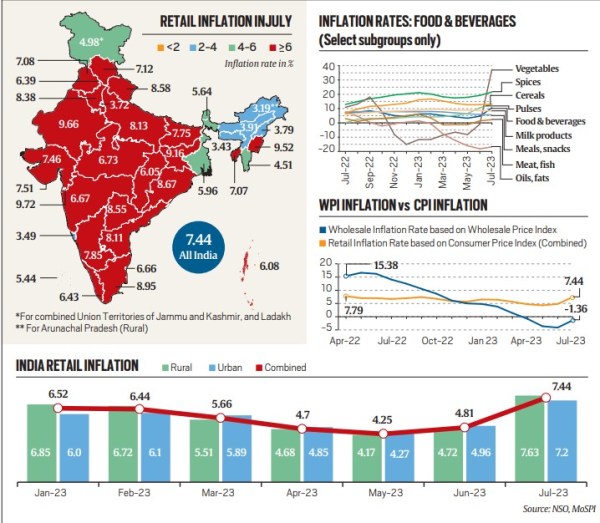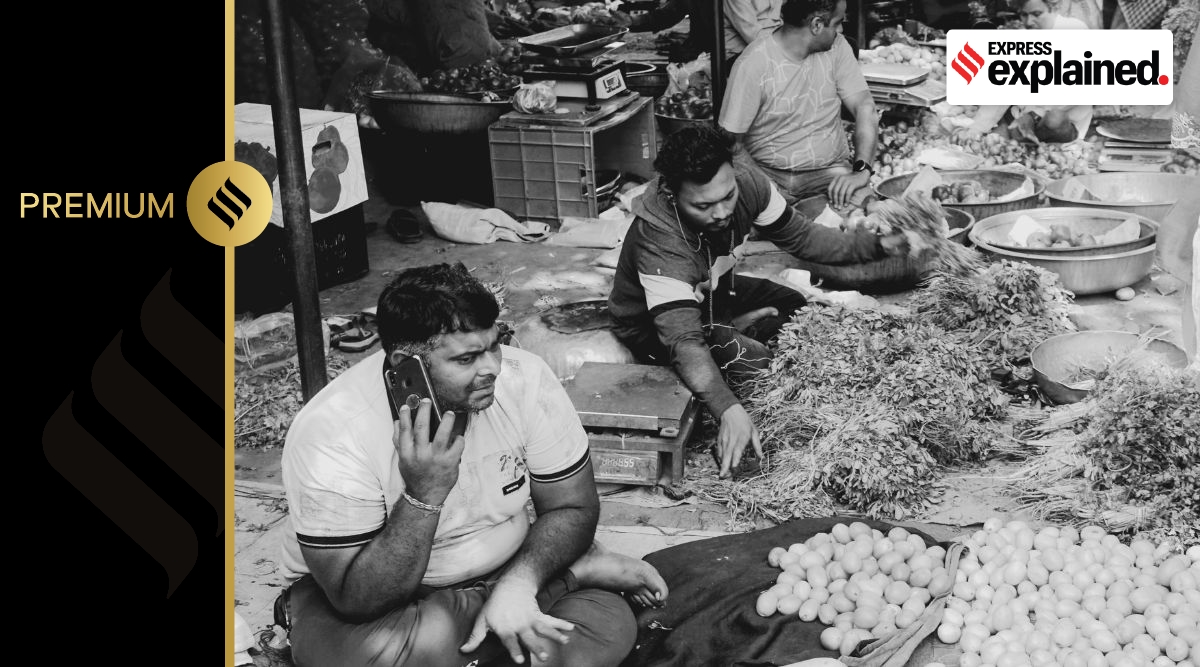The fight against runaway inflation is far from over. As the Reserve Bank of India (RBI) noted in its August monthly bulletin released on Thursday (August 17), the uptick in inflation in its June reading mutated in July, with the unprecedented shock to tomato prices spilling over to prices of other vegetables.
So, even though core inflation — the non-food, non-energy component — witnessed a moderation, headline inflation is still expected to average well above 6 per cent in the second quarter.

‘Genie of inflation is still out’
Inflation data for July 2023, which came in at a 15-month high of 7.44 per cent, indicated “that the genie of inflation is still out of the bottle”. The RBI noted that upticks have flattered to deceive the good feeling of moderation that had started to set in during May and June.
While the easing of supply chain pressures and slower than anticipated growth in wages are creating conditions for core inflation to soften further, countries around the world are at different points of the curve. As geopolitical tensions intensify, prices of agricultural commodities, metals, and energy have picked up steam, bringing back the spectre of food and energy insecurity and potential spillovers to core inflation, the latest bulletin said.
This is the third instance of retail inflation rate crossing the upper limit of the 4+ /–2 per cent band of RBI’s medium-term inflation target in this calendar year, and the seventh instance since July 2022.
The RBI mainly factors in the retail inflation while deciding the benchmark interest rate (repo rate). In its latest monetary policy review last week, the central bank kept the key repo rate unchanged at 6.50 per cent, even as it raised the inflation projection from 5.1 per cent to 5.4 per cent for FY2024 in the wake of high food inflation, signalling that a rate cut is unlikely in the near future.

Inflation’s nationwide impact
Food prices have surged, especially those of vegetables, cereals, pulses, milk, and milk products, pushing up the inflation rate at both the retail and wholesale levels. In July, India’s retail inflation rate surged to a 15-month high of 7.44 per cent, with an all-pervasive effect across the country. (See map)
Out of the 36 states and Union Territories, 15 states and UTs recorded a higher retail inflation rate than the national rate of 7.44 per cent in July, and 24 states and UTs registered an inflation rate higher than 6 per cent.
The highest inflation rate in July 2023 was seen in Dadra and Nagar Haveli (9.72 per cent) and Rajasthan (9.66 per cent), followed by strife-torn Manipur (9.52 per cent), Jharkhand (9.16 per cent), Tamil Nadu (8.95 per cent), Odisha (8.67 per cent) and Uttarakhand (8.58 per cent).
In the state-wise Consumer Price Index (CPI) the highest weight is for Maharashtra (weight:13.18 per cent) which registered an inflation rate of 6.67 per cent in July, followed by Uttar Pradesh (weight:12.37 per cent) which recorded an inflation rate of 8.13 per cent.
Lakshadweep, Daman & Diu and Dadra & Nagar Haveli have the lowest weights in the CPI at 0.01 per cent, 0.02 per cent, and 0.03 per cent respectively.
Best of ExplainedWomen's reservation: Seeds of the idea under Rajiv Gandhi and Narasimha Rao govtsWho was Hardeep Singh Nijjar, the Khalistani separatist that Canada PM Trudeau says India may have got killedBima Sugam: Is it a ‘UPI moment’ for insurance sector, and how will it benefit customers?Click here for more
While the inflation rate was high in most parts of the country, eastern India and Jammu & Kashmir and Ladakh fared better. States in eastern and Northeastern India, except Manipur and Tripura, registered a retail inflation rate lower than 6 per cent in July 2023. West Bengal registered an inflation rate of 5.96 per cent, while Sikkim’s inflation rate was 5.64 per cent. Jammu & Kashmir and Ladakh (combined) along with Goa recorded an inflation rate lower than 6 per cent.
As prices of food are rising…
Food and beverages, which accounts for 45.86 per cent of the overall consumer price index, recorded a sharply higher inflation rate of 10.57 per cent in July as against 4.63 per cent in June. It had remained below 5 per cent over the last three months.
Among the major subgroups under the food and beverages category, the cereals and products inflation rate has remained in double digits for eleven months, with the latest print at 13.04 per cent for July.
Pulses inflation has been more than 5 per cent over the last four months, and has risen to double digits since June. Milk and products inflation has been more than 7 per cent over the last one year.
Vegetables, after contracting for eight months, jumped to 37.34 per cent in July.
Also in Explained | Tomato prices are on fire — and will not come down soon. Here is why
The inflation rate has also transitioned into higher prices for prepared meals, snacks, sweets etc., which after shooting up to more than 7 per cent last year, moderated over the last five months but continues to be over 5 per cent.
…Households are struggling
Rising food prices are expected to strain household budgets further. A recent report by Crisil says the cost of preparing a thali meal at home rose sharply for the third month in a row in July, mainly due to the soaring price of tomato.
Most Read 1Chandrayaan-3 mission: Dawn breaks on Moon, all eyes on lander, rover to wake up 2As Indo-Canadian relations sour, anxiety grips Indian students, residents who wish to settle in Canada 3Karan Johar says Sanjay Leela Bhansali did not call him after Rocky Aur Rani: ‘He’s never called me but…’ 4Gadar 2 box office collection day 40: Hit by Shah Rukh Khan’s Jawan onslaught, Sunny Deol movie ends BO run with Rs 45 lakh earning 5Shubh’s tour in India cancelled: Why is the Canada-based singer facing the music?
The cost of vegetarian and non-vegetarian thalis rose 34 per cent and 13 per cent on-month respectively in July. Of the 34 per cent rise in the cost of a vegetarian thali, 25 per cent can be attributed solely to the price of tomato, which rose 233 per cent on-month to Rs 110 per kg in July from Rs 33 per kg in June, Crisil said.
At the wholesale level too, the inflation rate rose to (–)1.36 per cent in July from (–) 4.12 per cent in June, even though on a year-on-year basis it continued to remain in the deflationary zone for the fourth consecutive month.
Also ReadSensex, Nifty dip by 1%: What has triggered this sell-off?Bima Sugam: Is it a ‘UPI moment’ for insurance sector, and how will it be…EV subsidies: Will EU-China row lead to a tariffs war?How Basmati in India is reaping the rewards of research
At the wholesale level, the food index recorded a 7.75 per cent inflation rate, led mainly by a 62.12 per cent spike in vegetable prices.
© The Indian Express (P) Ltd


